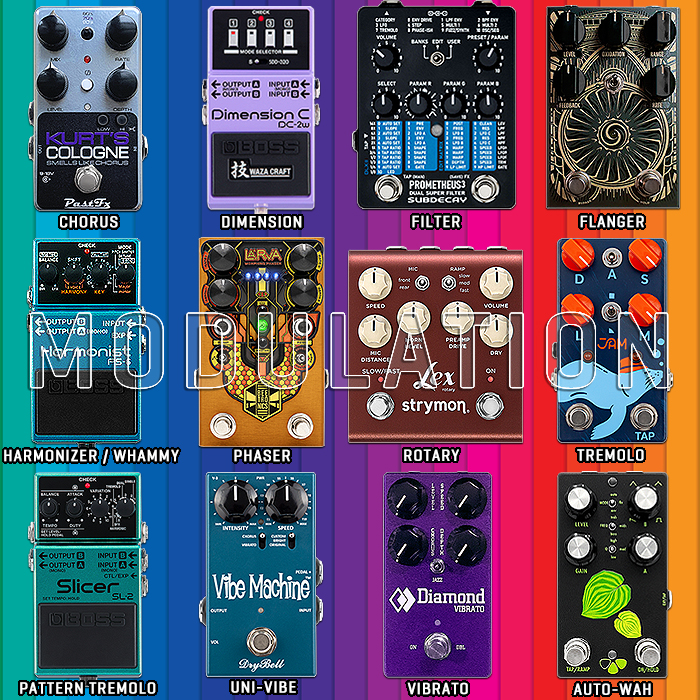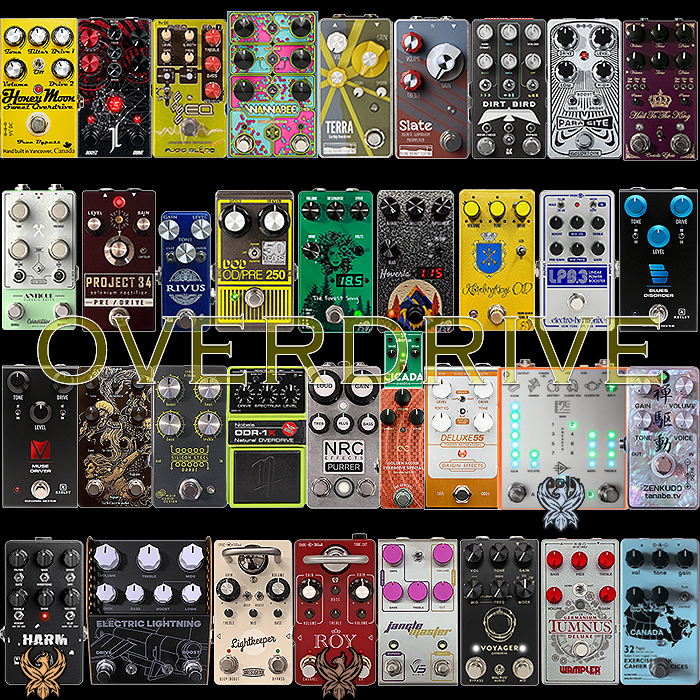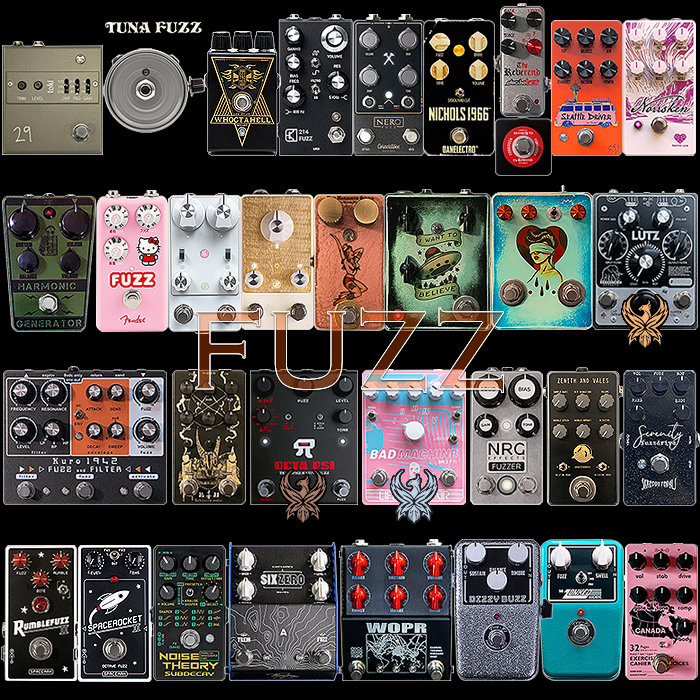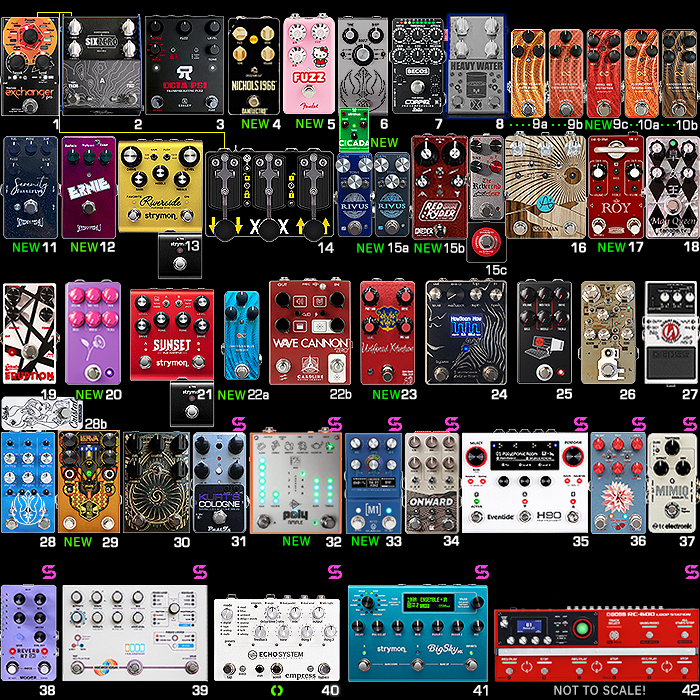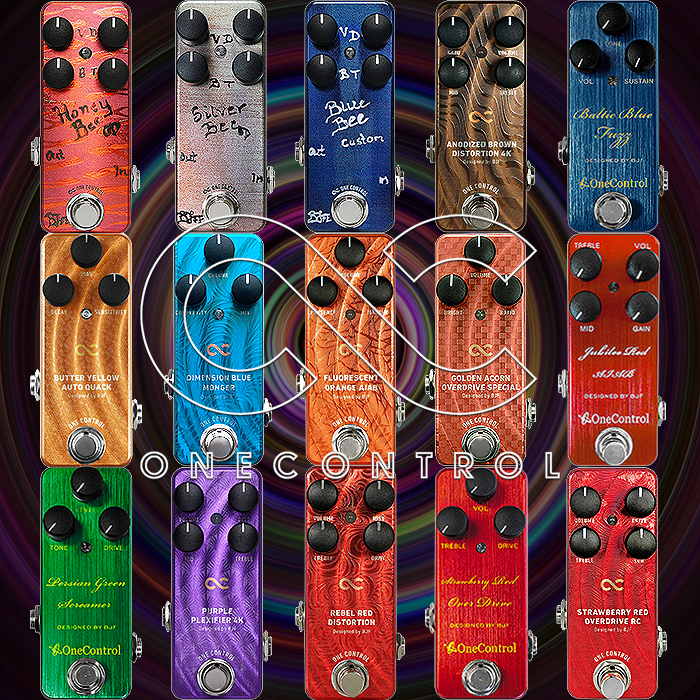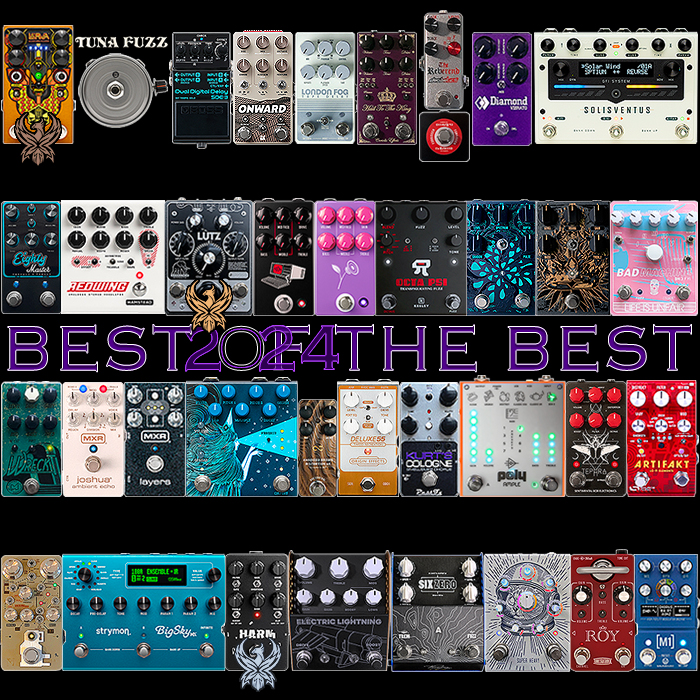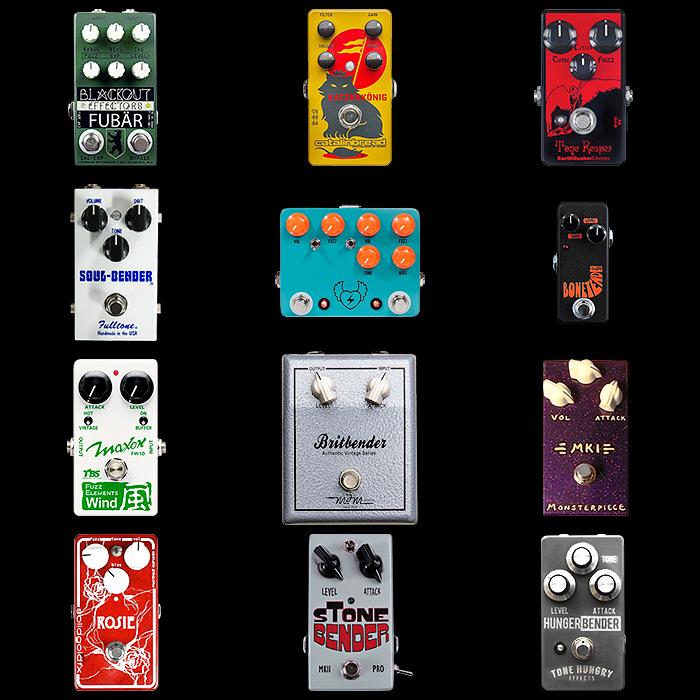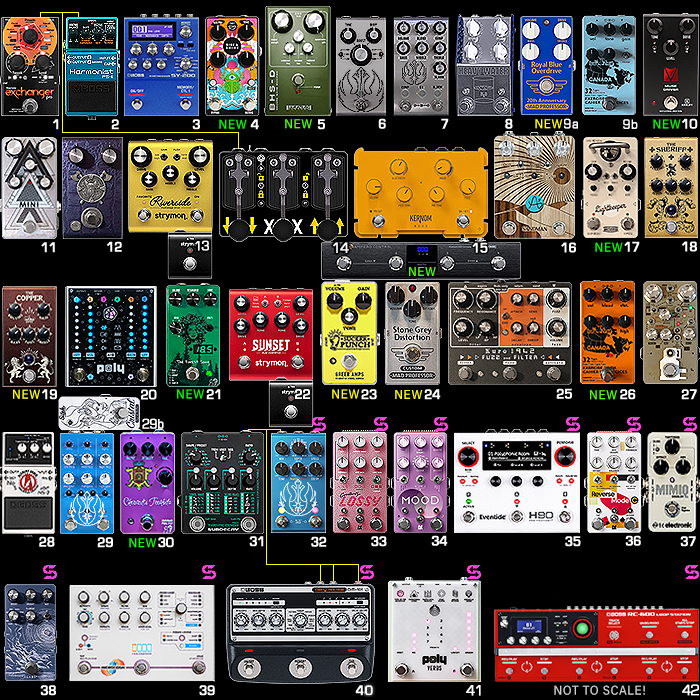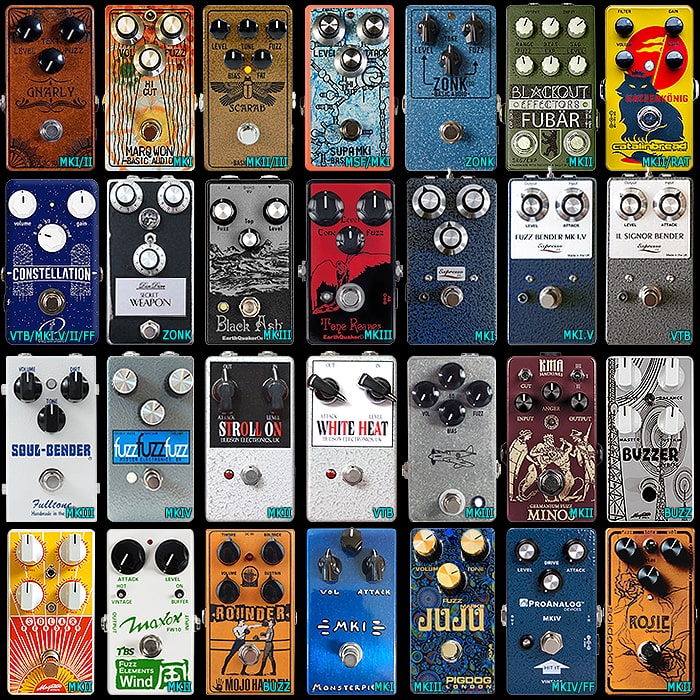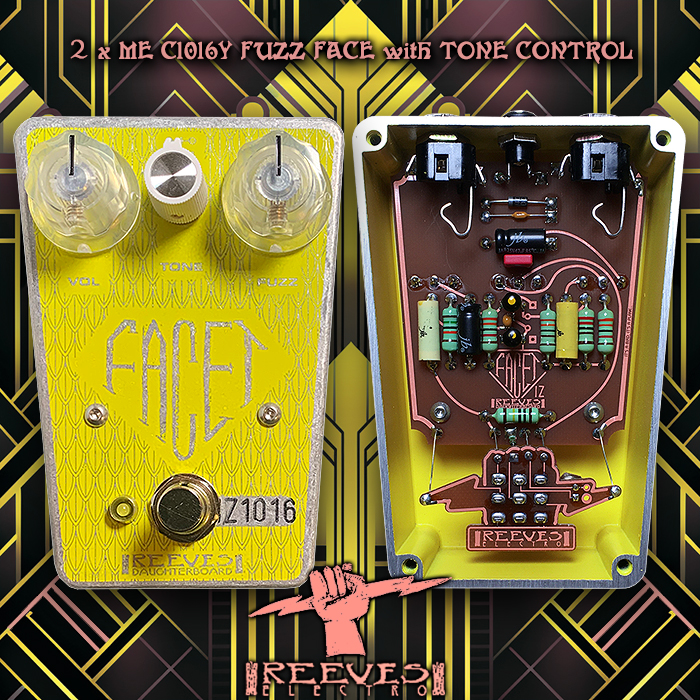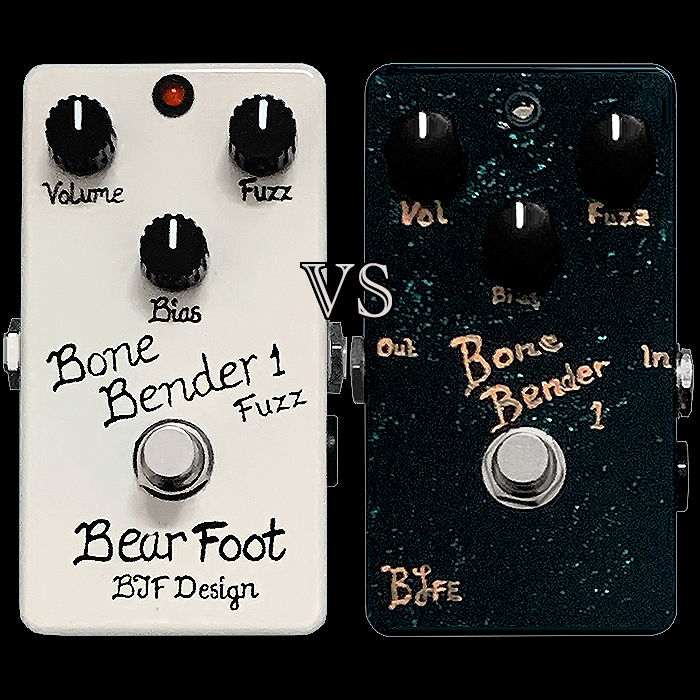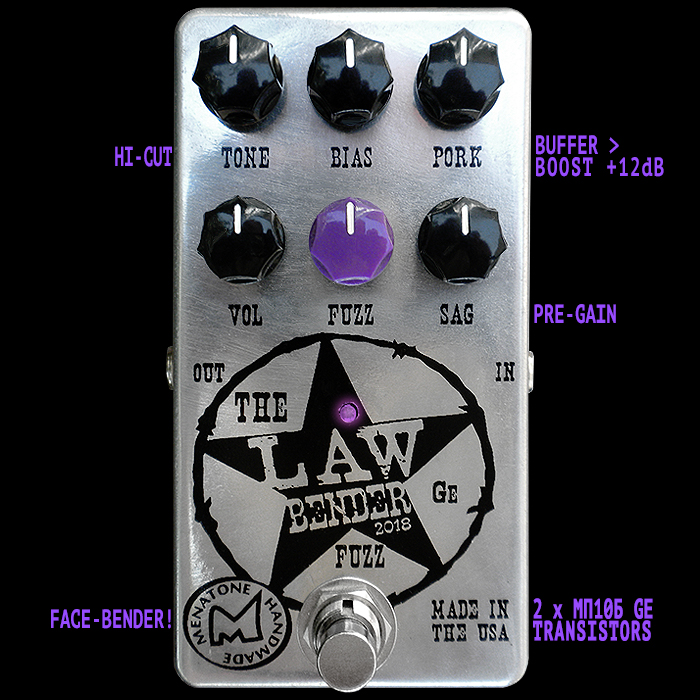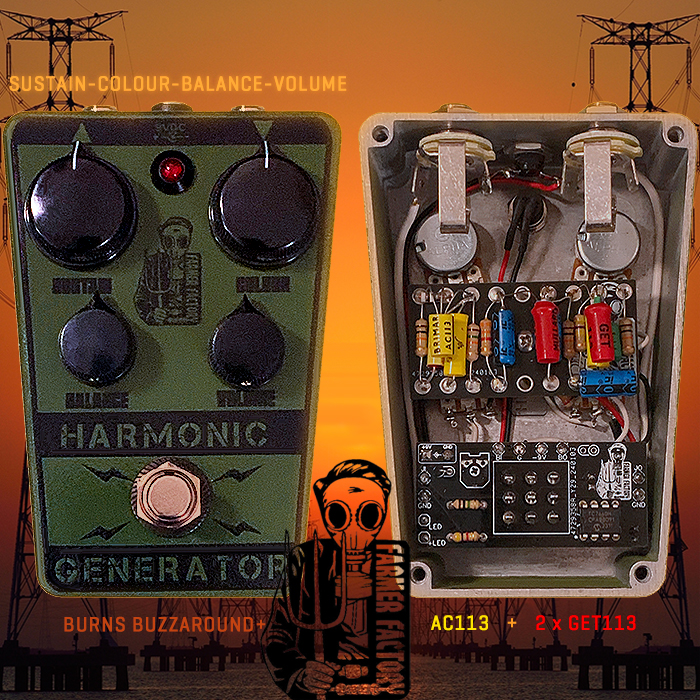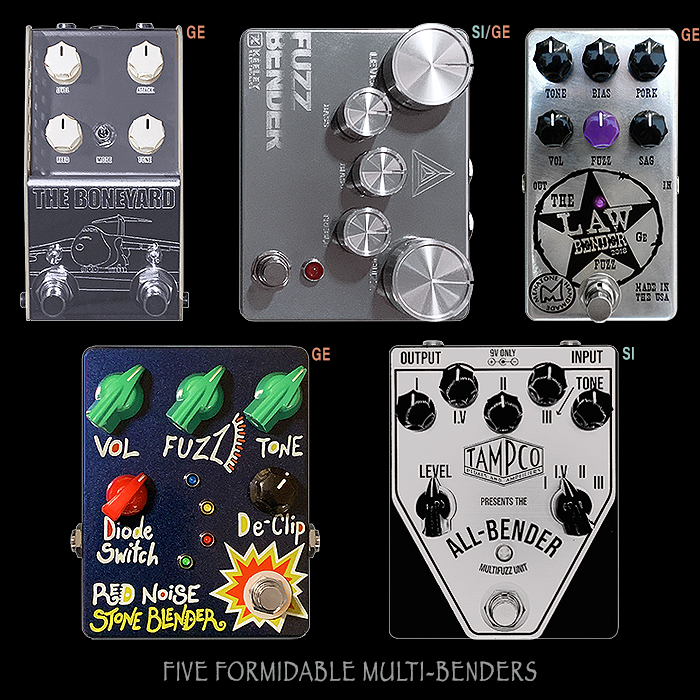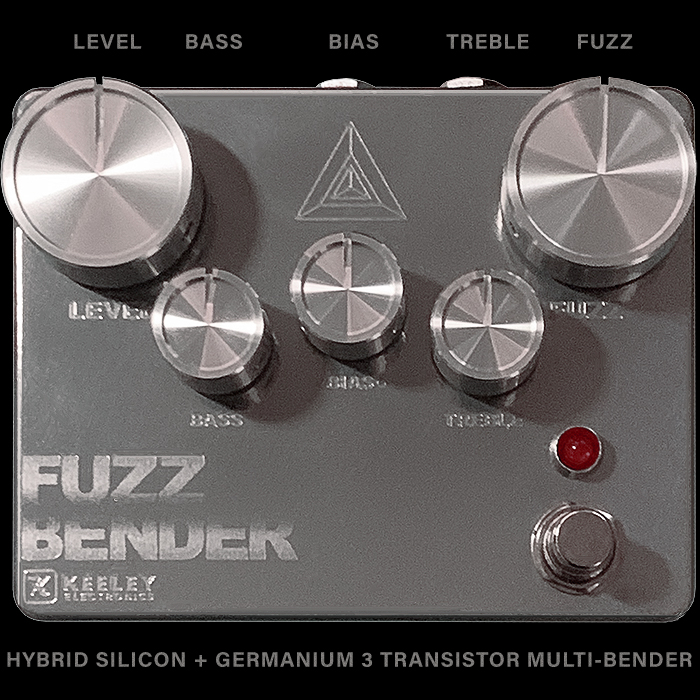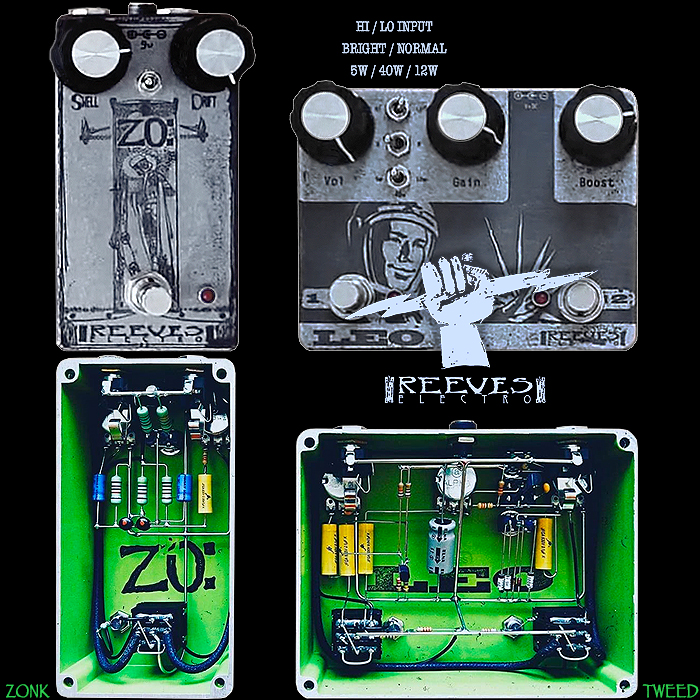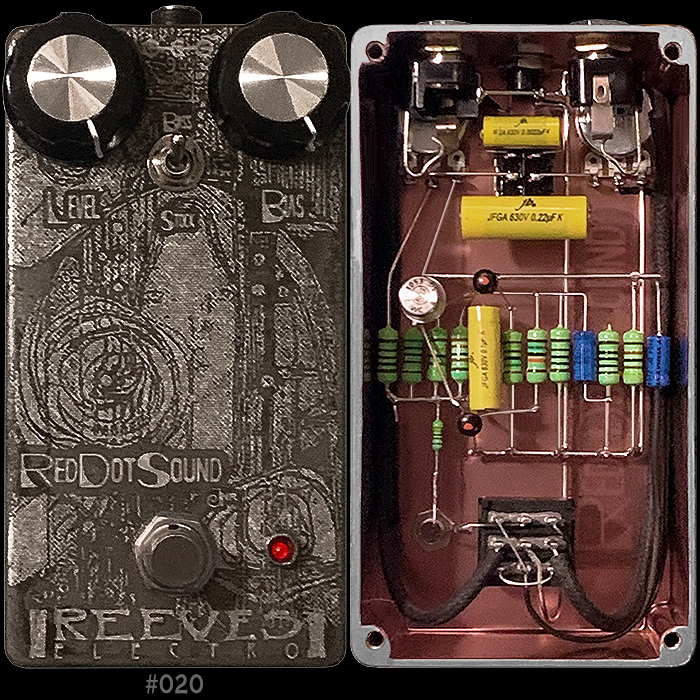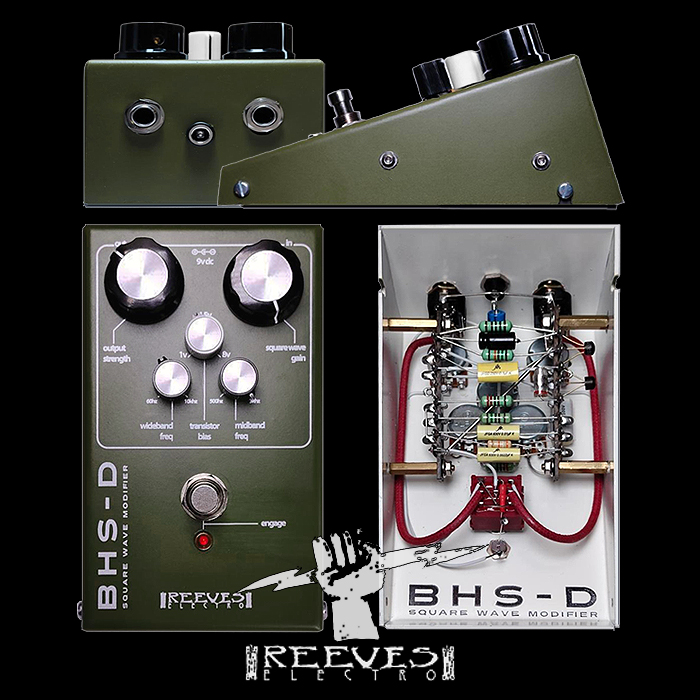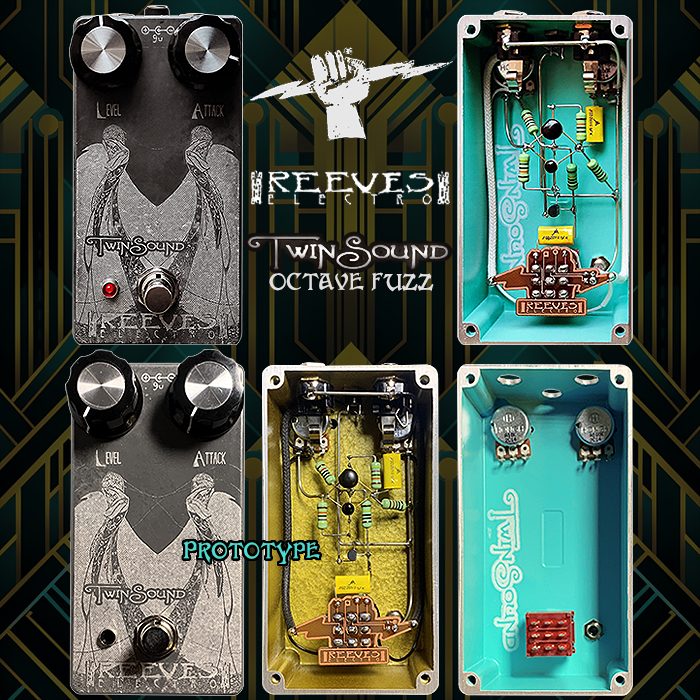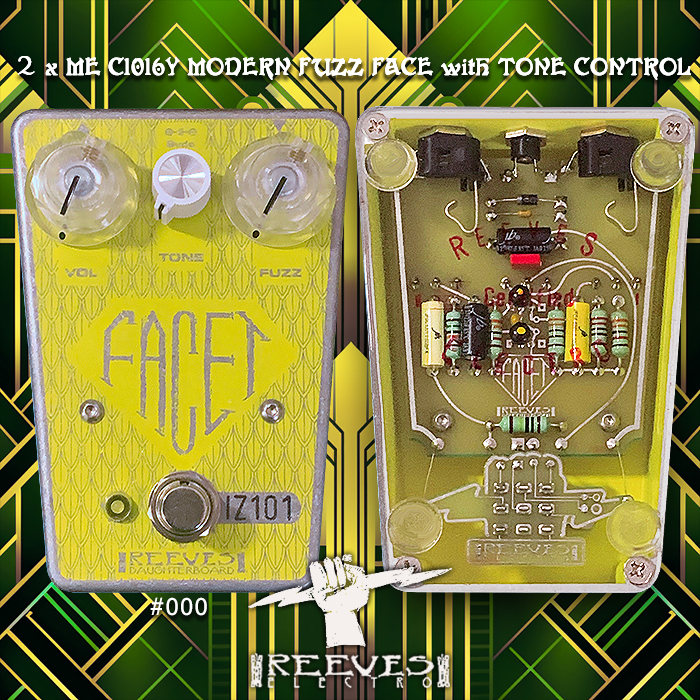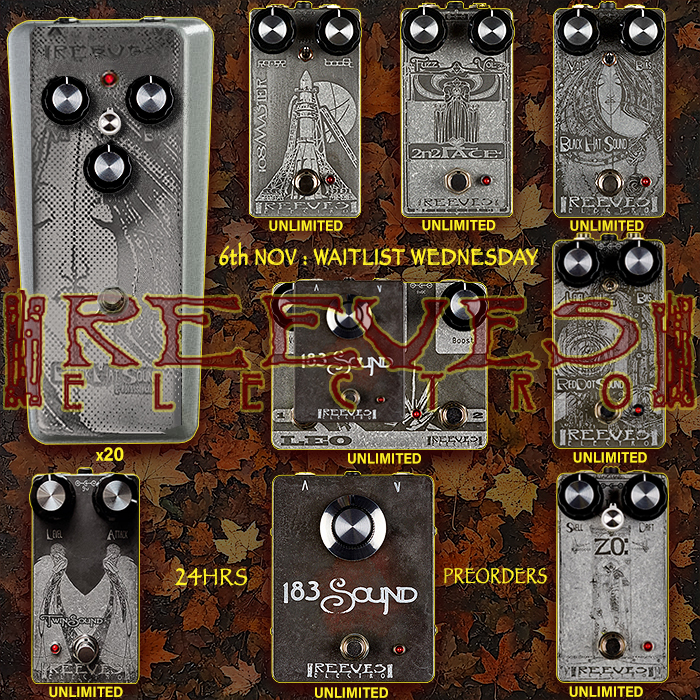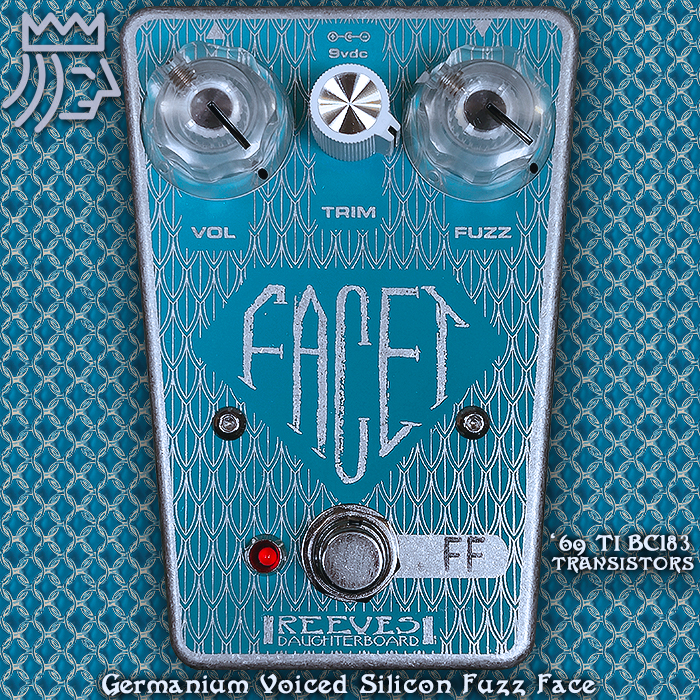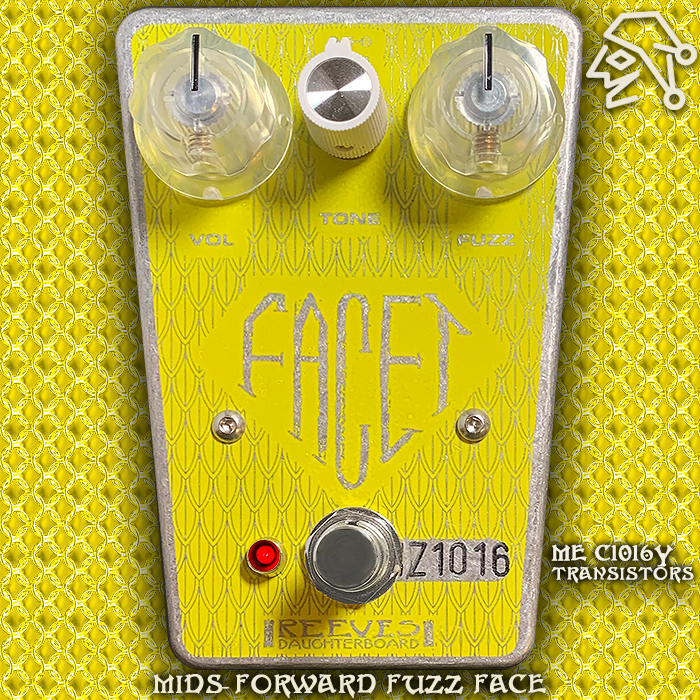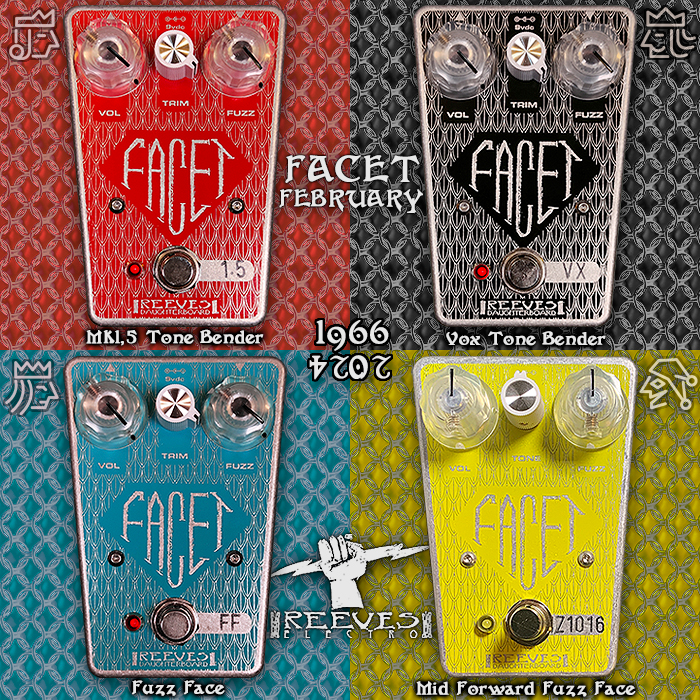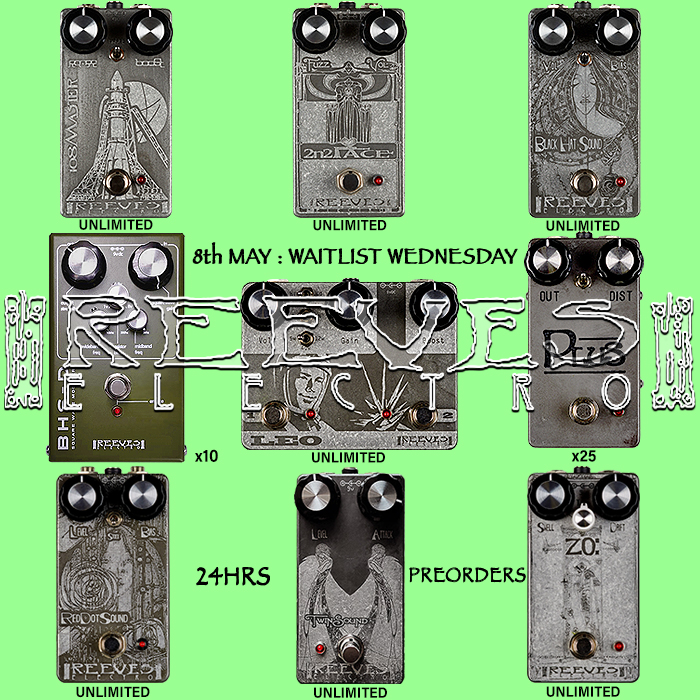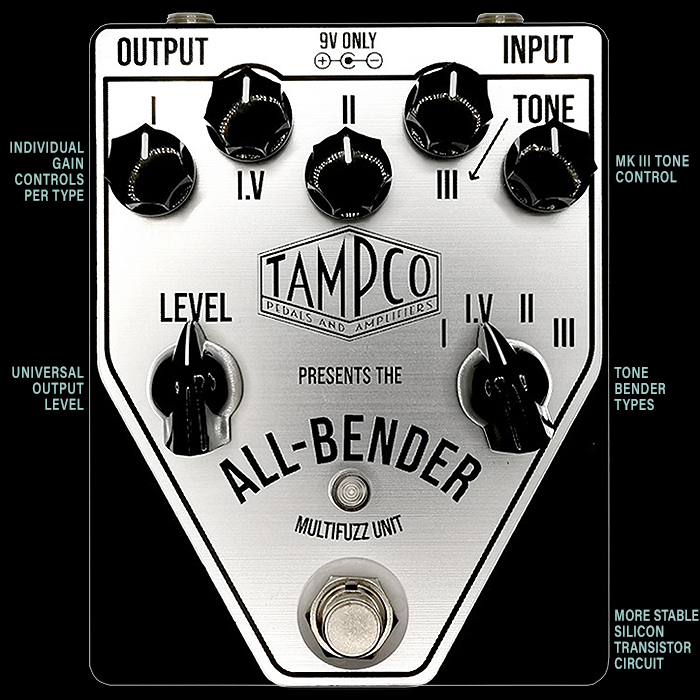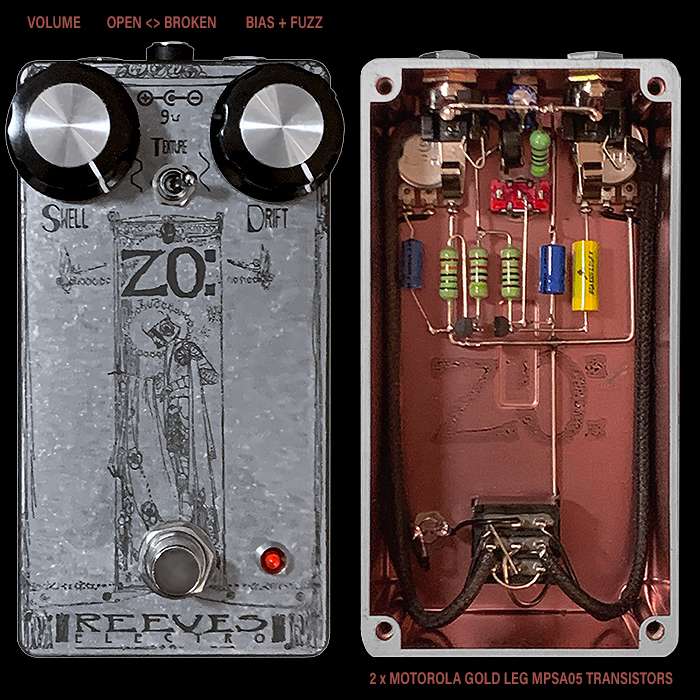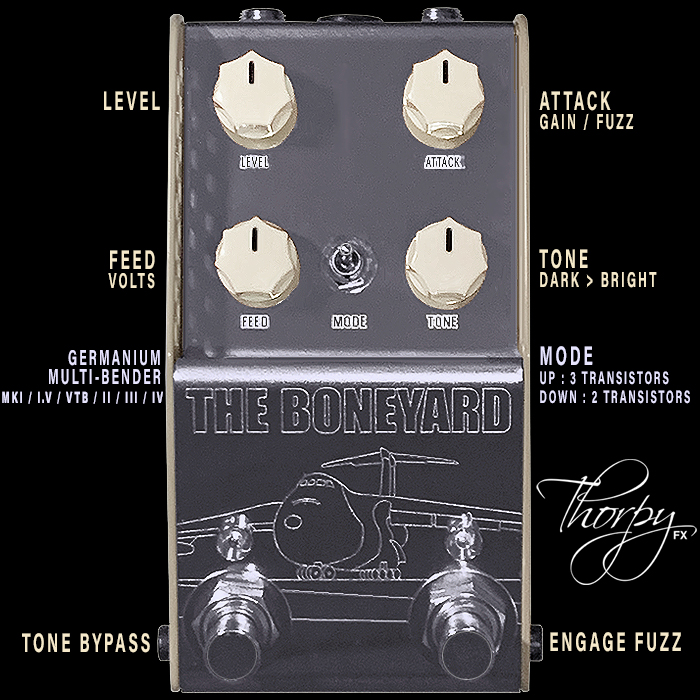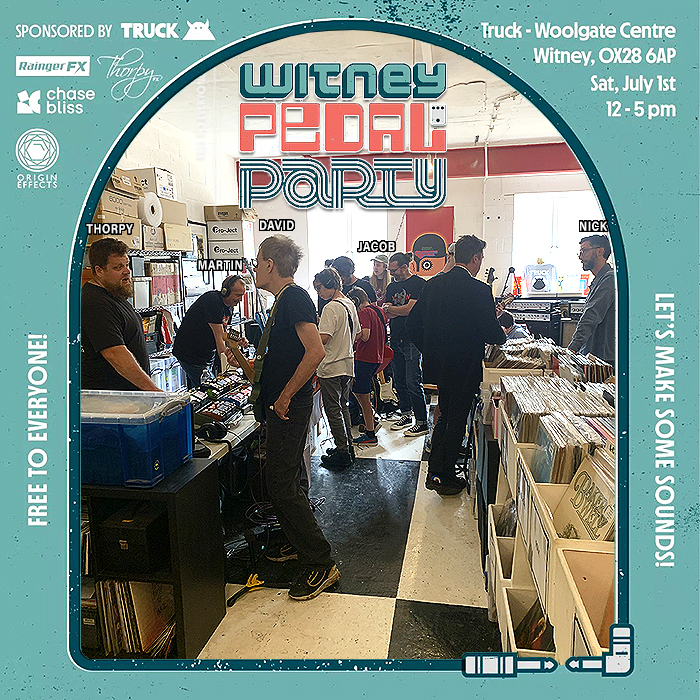My Reeves Electro second batch #29 BlackHatSound-Deluxe with copper insides has landed!
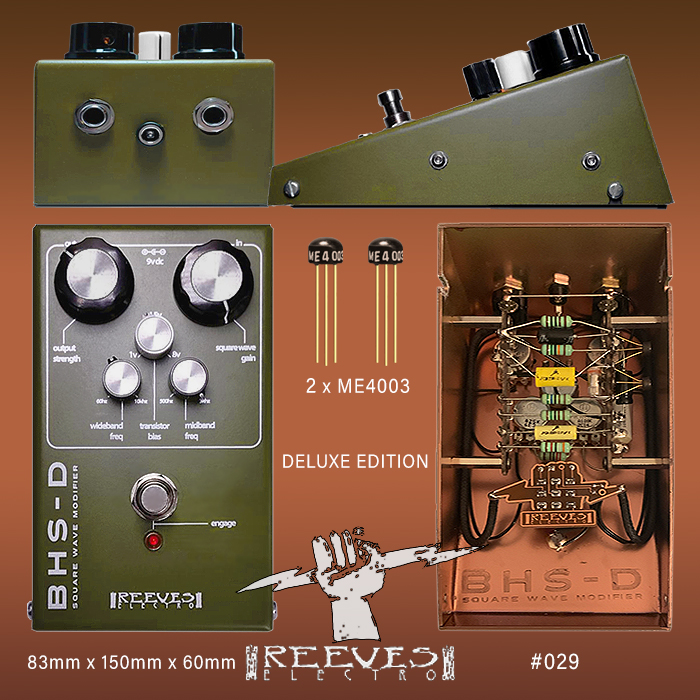
The first batch of the BHS-D had uniformly white insides, while batch 2 had mostly gold interiors, my copper one, and one in Zonk blue! I would have doubly lucked out if the circuit anchor posts had remained brass as in the first batch, but they were switched to steel in this new batch. I still feel that my copper insides provide the best complementary colour scheme to the components - really sets off the greens and yellows of the resistors and capacitors, as well as the footswitch daughterboard!
The BHS-D is my 4th Reeves Electro pedal - and actually my first in a while - where I will also be picking up a Facet IZ this coming Wednesday - so the Reeves Electro Capsule collection is now fully back on track!
I’ve truly loved every Reeves Electro release I’ve owned so far, each is highly fully flavoured and properly potent in its intended genre category :
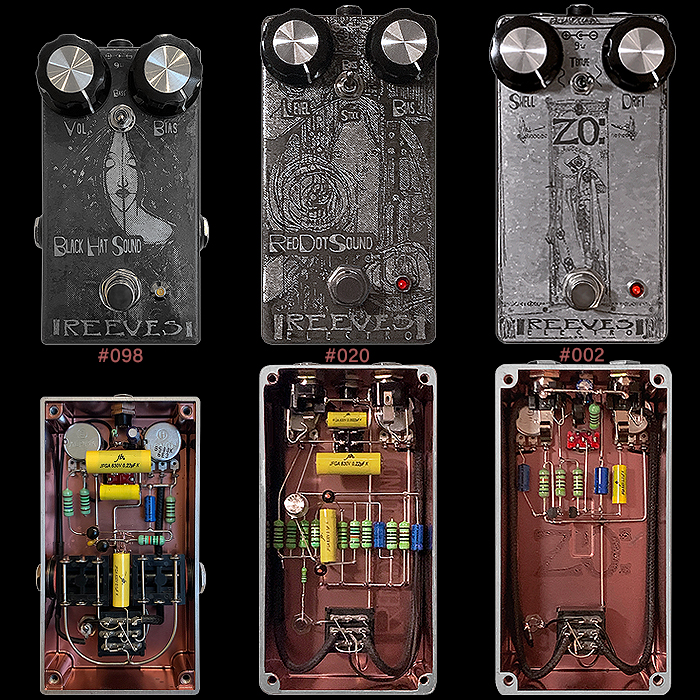
While of that flagship trio, the first OG BlackHatSound has really been my favourite from the start. So I was really looking forward to getting stuck into a little more of the same - but with added granularity and nuance!

First - a few notes on the production process - these are obviously wholly and exactingly hand-made pedals, and the very tactile nature of working with these complex builds means that they can pick up some slight scuffs and blemishes along the way - that's just kind of par for the course when you need work so intricately.
The enclosure here is a very unique kind of hinged design with fixing screws at the top, and sort of pivot screws at the base - so that just a little loosening will allow you to flip out the back-plate to inspect the beautiful interior - without need to physically remove the whole thing, or indeed remove any screws. The nature of this design means that the enclosure is not entirely dust-proof - as there are small slits / apertures at the top and bottom of the back plate. And the nature of said tight-fitting backplate design can mean that you scuff the inside edges and therefore paintwork - each time you open and close the pedal.
Markus notes :
"These are NOT powder coated, and so will mark more easily if handled roughly. They are painted with traditional solvent based paint and to that end will age and wear as years go by, in ten years' time ... it will look ten years' old!"
Controls - Output Strength, SquareWave Gain, WideBand Frequency : 60Hz > 10kHz, Bias : 1v > 4.5V > 8v, MidBand Frequency : 500Hz > 3kHz.
Dimensions : 83mm W x 150mm H x 60mm D; 20mm rise front of wedge, 60mm rear rise, +20mm for knobs

The original BlackHatSound had just 3 controls - Volume, Bias and a Bass Boost switch - where I tend to have that set to Volume @ 3 o'c, Bias @ 9 o'c, and Bass Boost switched on. The Bass Boost switches in a different capacitor which adds quite a bit more heft to the low-end profile of the pedal. That process Markus pretty much tuned by ear - and ended up with the capacitor value which he felt added the right amount of flavour to that function. The OG BHS has some real oomph with my settings applied and delivers a slightly low-end leaning loud and relatively searing fuzz voicing - very much like a TB MKI, and with not too much brightness in the top-end.
Both versions of the BlackHatSound use the same MicroElectronics ME4003 BlackHat Silicon Transistors Pair. While you do get slightly different outputs by nature of the two somewhat different circuits.
The BHS-D kind of shares the same Volume and Bias sweeps while Markus does note that he changed from Linear to Logarithmic taper on those controls - so you will have to set them in slightly different positions to achieve similar outputs.
Essentially for the OG BHS the Gain is maxed out by default, and you shape the output via Volume and Bias controls principally - while on the BHS-D you have a variable Gain control too, and a very unique overlapping 2-Band EQ. Where the left WideBand knob spans 60Hz to 10kHz, and the left MidBand knob spans 500Hz to 3kHz.
So you can use those in a variety of ways - including having one of the controls kind of fine tune the profile of the other for the frequency cluster you're aiming for. The EQ is at the output end of the circuit and does result in some degree of output / gain drop compared to the original. The Bass Boost of the original also gives you a real low-end heft that you can't exactly replicate / dial in on the BHS-D.
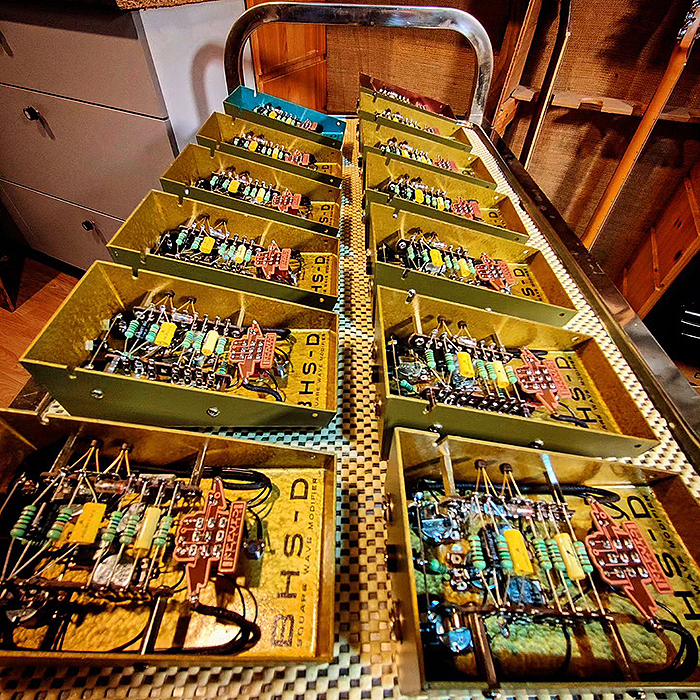
The output of the BHS-D is much better balanced, and the EQ seems to bring out more harmonic textures - of course alongside greater granularity and variety.
Markus 'tuned' the BHS-D to better be more capable of delivering those super scratchy Velvet Underground through to scooped Smashing Pumpkins tones - with some deft knob-twiddling.
Once you get over the fact that the BHS-D outputs a tiny bit lower than the OG BHS you start to pick up the finer details in the BHS-D's breakup texture. The combination of the 2 EQ's means you can get it much brighter and wirier than the original - and really accentuate lots of different frequency clusters along the way - while the OG BHS still delivers more low-end heft overall - if that's you thing.
I really like having both - as each one kind of wants to tread a different path by nature of its output - inspires different playing. They obviously sound very similar at a certain level - but the experience is not exactly the same - which is fantastic if you own both like me! You can easily and justifiably run both on your board at the same time - as they're capable of delivering different outputs - and each can do things the other cannot.
I've therefore settled on fairly different voicings for the 2 pedals - where a sweet spot I like to linger on for the BHS-D has the following settings - Output @ Max, Gain @ 2 o'c, Bias @ c. 3 o'c, WideBand Freq @ c. 9 o'c, and MidBand Freq @ c. Noon! You can see that that differs quite significantly form Volume @ 3 o'c, and Bias @ 9 o'c as I have my OG BHS set - indeed with the Bass Boost on also.
This BHS-D is actually a really tricky and highly intensive build for Markus - and wrought with numerous challenges and fiddly bits - so alas the price is going up again for the next batch - whenever that happens. Batch 3 when it materialises will be a touch dearer at £550. Which is a weighty investment if you already own the OG BHS. You can read up more about the finer details of the BHS-D on the Reeves Electro Website.

How much each of the BlackHatSound pedals appeals to you really depends on how you intend to use it. It takes a lot to beat the visceral punch of the smaller original BlackHatSound - that is so instantly satisfying. The nature of the added controls on the BHS-D means you have to work a little harder to get where you need to - but it offers a far wider palette of sounds and textures.
The core tonality has always been described as very MKI Tone Bender centric - and with the Bass Boost on and in full flow it instantly transports you to those sorts of signature tones. The BHS-D doesn't get quite that full-on in the same way the OG BHS does - don't get me wrong - the BHS-D gets you very close to the max OG BHS output - but they're not exactly the same experience.
Originally I was kind of expecting to have all the oomph of the original in just a more expansive fashion - with just a little more granularity - particularly on the EQ-side. While the Bass Boost of the OG is also significant. Therefore - as it should be - I like each pedal for slightly different things and slightly different reasons.
I sometimes forget that adding further controls will almost always have a significant impact to the pedal's output. My good friend Joe Halliday at Hello Sailor Effects - made various experiments on his Anchor Drive to introduce more specific and more granular tone controls - but each time he added a control - in kind of impacted the output in non-optimal fashion. So he stripped it back again to its original simpler configuration - which still sounds best!
And so with the OG BHS vs the BHS-D - the lager pedal is more capable, textural, nuanced, and overall better balanced - in many ways the more High Fidelity pedal. While the OG BHS is a little rougher and rawer, and more instant - which is nice too. Both definitely have a significant place in my reference collection!
Demos







